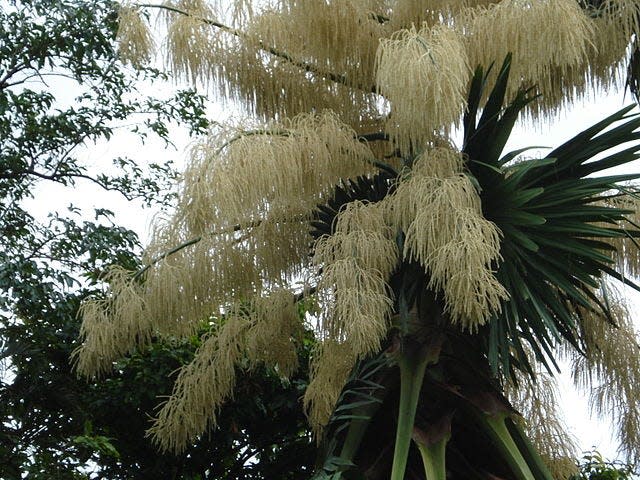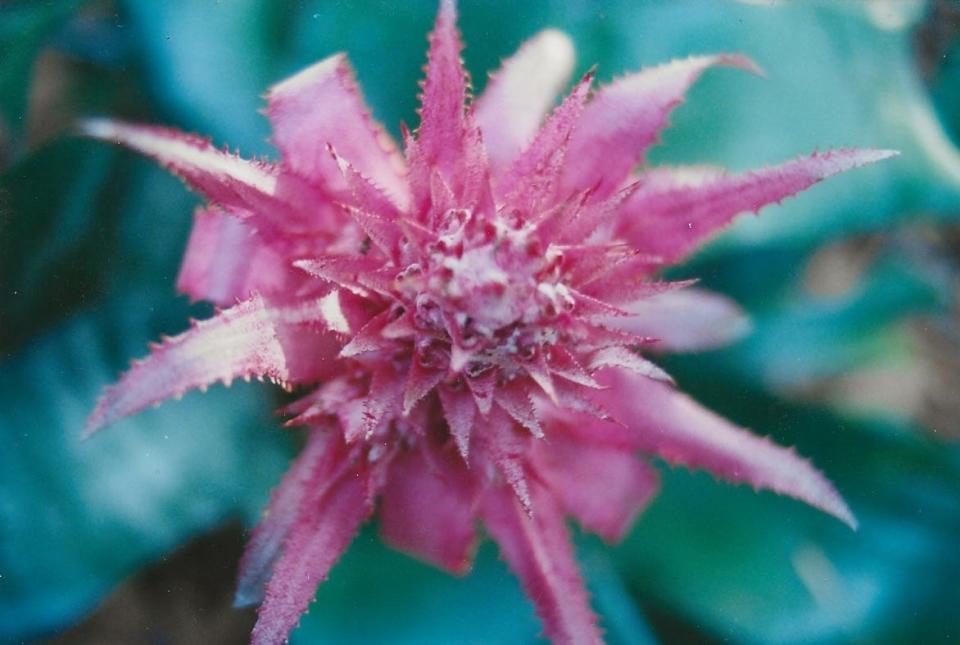'A work of art': Palms, the princes of the plant kingdom, have fascinated for centuries

Talk about shock and awe: Stories abound that describe northern botanists’ first encounters with plant life in tropical climes. The sheer mass and diversity of Equatorial jungles has been life-changing for many scientists.
What plants most deeply impressed those folks? It wasn’t colorful orchids and flowering vines or the forest trees they adorned. Nor did towering bamboos or blossom-bedecked shrubs fully capture their imaginations. No: It was palms, the princes of the plant kingdom.
Don’t take my word for it. Consider prominent botanist Miriam L. Bomhard, who wrote "Palms are probably the most remarkable plants in the world." Indeed, in 1937 the Smithsonian Institution published Bomhard’s opinion in more depth. "As a monarchy in which but a single family of plants had the hereditary right to rule, the palms would unquestionably hold this honored position."
Oft mistaken for banana plant, white bird-of-paradise is better. Unless you want fruit
Much earlier, in the 1700s, famed botanist Carl Linnaeus – responsible for the binomial method of classifying species – anointed palms "principes," meaning princes of the plant kingdom. Centuries later, the International Palm Society recognized the special status of palms by calling their quarterly bulletin (in which I’ve published) "Principes." (Decades later, the bulletin’s name was changed to "Palms.")
What makes palms – about 2,100 species of them – stand out? It’s difficult to put into words, though David Fairchild (plant explorer and longtime head of the USDA’s Department of Seed and Plant Introduction) did it remarkably well in his 1944 book "Garden Islands of the Great East."
"To appreciate a palm, you must view it as you would a work of art; as if it were a marble statue or piece of bronze. … Their glory is in their leaves, those structures so different from the leaves of ordinary trees, so different that even the moonlight, when it is reflected from them, strikes the eye in bands and not spots of light. Then too the whispering of palm leaves is far different from the sighs of pine needles or the rustling of oak and maple leaves. There is an especial softness about it."
A new war in the garden? Giant African land snails appear to be invading Florida again
Not unsurprisingly, these princes of the plant world hold numerous records. Nature’s longest leaves – up to 70 feet – are borne by Raphia farinifera, native to Uganda and Tanzania. The largest and heaviest inflorescence – a 30-by-40-foot mass of millions of flowers – appears atop Corypha umbraculifera, aka talipot palm, from India and Sri Lanka. Finally, the longest vines – up to 787 feet, with reports of 1,800-foot-long specimens – are those of rattan palms from Southeast Asia.
Plant to ponder: Silver vase
Silver vase is a sturdy Brazilian bromeliad that grows 18 inches tall in sun or light shade.

It features spiny, pink inflorescences that can last up to eight months. Propagate this species (Aechmea fasciata) by division.
This article originally appeared on The Ledger: Princes of the plant kingdom, palms hold a special reverance

